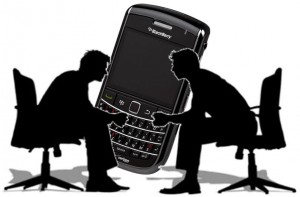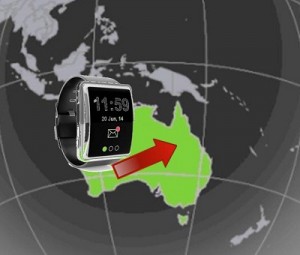This device would bring the Google operating system together with the secure and powerful BB services.
BlackBerry’s ongoing struggles have not shown any sign of coming to an end over the last while, despite a number of strategic improvements that the company has made, and it has recently been rumored that the next step along the way will be an Android smartphone.
Now, further rumors are indicating that BlackBerry will be partnering up with Samsung for this new mobile device.
After stumbling a number of times in its predictions as to what would turn the company around, it now looks like it is going to make a move toward an Android smartphone that could potentially differentiate itself in a whole new way. There is a great deal of potential in this type of idea. If it partners with Samsung, it has the chance to make a sleek, attractive, cutting edge device and if it uses Android, it could combine the platform with its own security and software strengths.
The result could potentially be an Android smartphone with a physical keyboard, high security, and awesome software.
 Of course, none of these mobile technology rumors have actually been confirmed, but the reports have been made by certain sources that have been highly accurate about their predictions, in the past. According to Eldar Murtazin, the Russian tech blogger, the BlackBerry Venice or BlackBerry Slider, which had been unannounced but that were spotted at the MWC featuring a dual-edge display, could potentially be released based on the Android operating system.
Of course, none of these mobile technology rumors have actually been confirmed, but the reports have been made by certain sources that have been highly accurate about their predictions, in the past. According to Eldar Murtazin, the Russian tech blogger, the BlackBerry Venice or BlackBerry Slider, which had been unannounced but that were spotted at the MWC featuring a dual-edge display, could potentially be released based on the Android operating system.
A tweet from the blogger indicated that if BlackBerry and Samsung are working together, the outcome could be an Android Lollipop mobile phone with BB services. The idea is that the trusted enterprise services that are the foundation strength of BlackBerry could potentially be carried over to a mobile device that is launched based on Android.
The reports of the two companies working together on an Android smartphone were released only a day after others that had indicated that BlackBerry was considering making a mobile device based on that operating system, in the first place.
A new forecast from Roy Morgan Research says that Australians will soon buy more wearable technology.
Independent research firm, Roy Morgan Research, has released a prediction that has said that the claims of intention to buy a smartwatch by Australians currently reflects the types of figures that were generated about the intention to purchase smartphones back when those devices were in their infancy.
For that reason, the firm believes that Australia will soon start to see a notable growth in wearable technology.
The study included the participation of about 520,000 Australians and ran from January through April 2015. What was found was that 2.7 percent of the people who took part said that they felt that they would purchase a smartwatch within the following year. Though that figure may seem rather small, it may be more important than it appears, as the firm pointed out that early studies with regards to the intent to purchase an iPhone – back when that device had only just hit the market – were very similar. Back then, 3.6 percent of Australian survey respondents said that they were considering buying one within the first four months of its entry to the market.
What has yet to be seen is whether the trends for the smartwatch will continue to parallel those of the smartphone.
 It is currently estimated that there are nearly 13 million iPhone owners in Australia. That type of future for wearable technology within the country is clearly nothing to sniff at. Furthermore, when respondents were asked about whether they would prefer to purchase an Apple Watch or if they would rather invest in the wearables from another brand, the figures showed that a similar percentage want the Apple product in wearable technology as was the case with smartphones.
It is currently estimated that there are nearly 13 million iPhone owners in Australia. That type of future for wearable technology within the country is clearly nothing to sniff at. Furthermore, when respondents were asked about whether they would prefer to purchase an Apple Watch or if they would rather invest in the wearables from another brand, the figures showed that a similar percentage want the Apple product in wearable technology as was the case with smartphones.
Among those who are interested in the devices, a comparable percentage would prefer an Apple Watch to that of other brands as was the case when an iPhone was the choice over other smartphones within the first four months of its release.
What is interesting is that even the age profile of those who are interested in the smartwatch is similar to the figures from 2008 when the iPhone was new.
 Of course, none of these mobile technology rumors have actually been confirmed, but the reports have been made by certain sources that have been highly accurate about their predictions, in the past. According to Eldar Murtazin, the Russian tech blogger, the BlackBerry Venice or BlackBerry Slider, which had been unannounced but that were spotted at the MWC featuring a dual-edge display, could potentially be released based on the Android operating system.
Of course, none of these mobile technology rumors have actually been confirmed, but the reports have been made by certain sources that have been highly accurate about their predictions, in the past. According to Eldar Murtazin, the Russian tech blogger, the BlackBerry Venice or BlackBerry Slider, which had been unannounced but that were spotted at the MWC featuring a dual-edge display, could potentially be released based on the Android operating system.
 It is currently estimated that there are nearly 13 million iPhone owners in Australia. That type of future for wearable technology within the country is clearly nothing to sniff at. Furthermore, when respondents were asked about whether they would prefer to purchase an
It is currently estimated that there are nearly 13 million iPhone owners in Australia. That type of future for wearable technology within the country is clearly nothing to sniff at. Furthermore, when respondents were asked about whether they would prefer to purchase an 